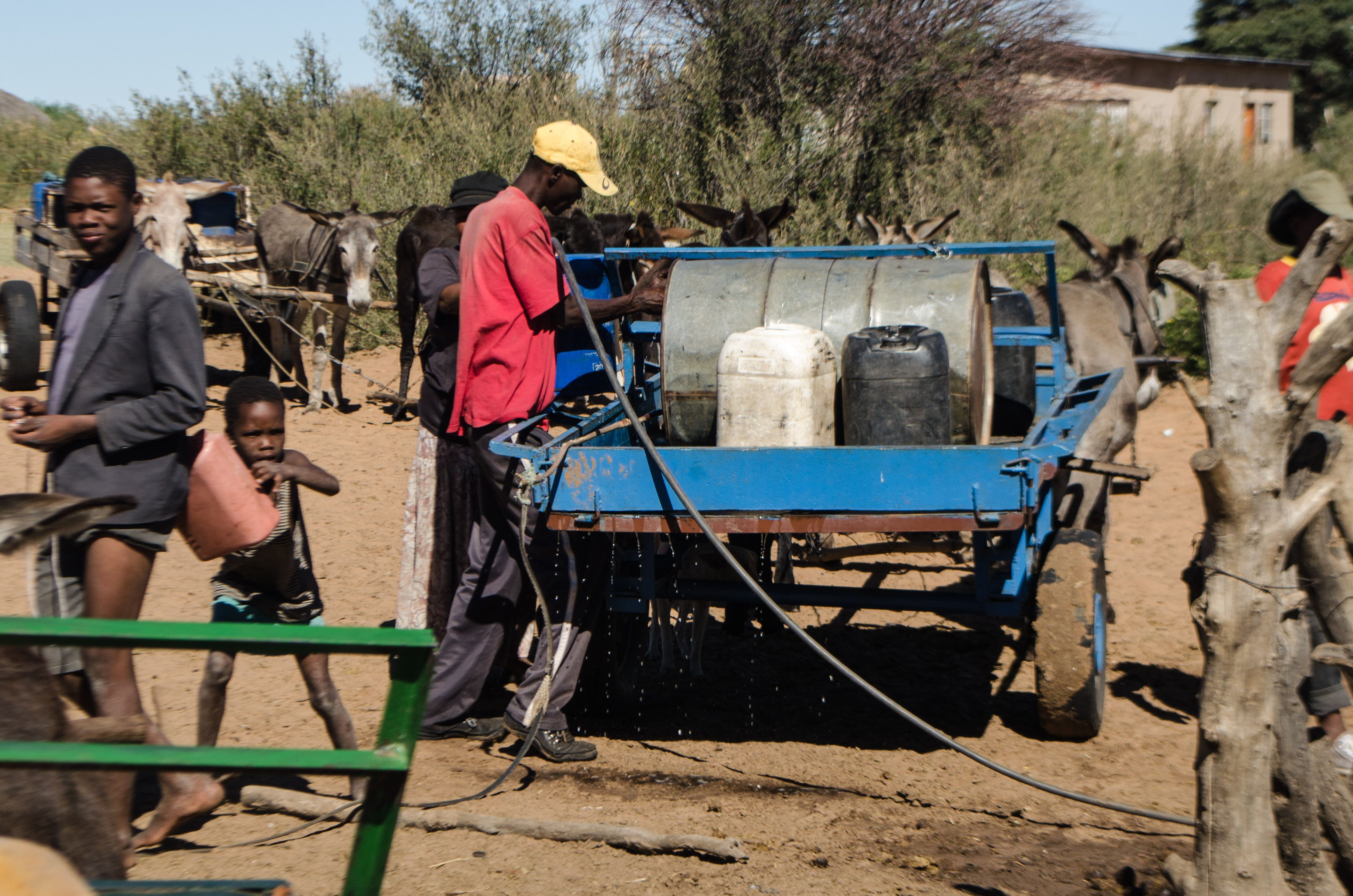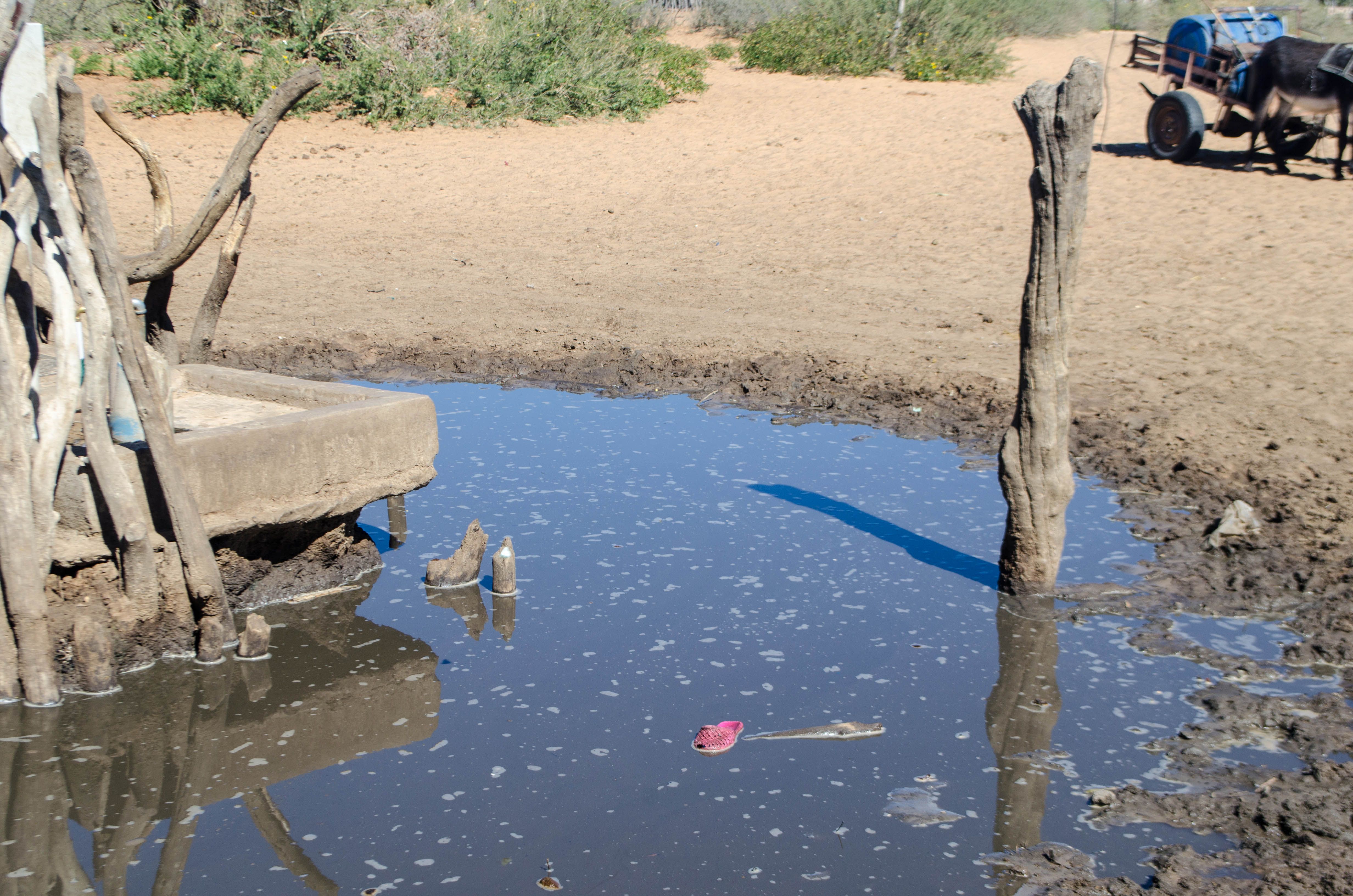Unlike most nine year olds, Obonetswe Leoto hates the weekends, when he spends most of his time collecting water for his family.
Obononetswe was born and raised in Maboane, a village near the world’s richest diamond mine, Jwaneng, in southern Botswana. His Saturday and Sunday routine has remained unchanged for as long he can remember. He rises at the crack of dawn, loads his family’s donkey cart with a dozen empty water canisters, and walks out to the village’s single communal standpipe, where he waits for water.
“I cannot go home empty-handed,” he says, as the water is needed to wash his school uniform, bathe, and cook meals. “Without water, I will be scolded at school for having dirty clothes and my family cannot eat.”
Aside from a couple of wealthier families, most of the village’s 2,000 inhabitants rely on a standpipe and the area’s cattle posts. Children primarily gather on weekends, when the lines are the longest, ideally to fetch a week’s supply for their families. But the flow is sporadic, hours or even days passing between turns.
“Because there is no water, we children of Maboane are angry and hungry,” said 13-year-old Mosimanegape Tsozane, Obonetswe’s friend who is also tasked with water collection for his family. Like Obonetswe, Mosimanegape is not allowed to return home without water and, at least once a month, he is beaten by his teachers for his unwashed uniform when the standpipe dries out.
The first Sunday of May, Obonetswe wakes up a little later than usual but still manages to secure the second spot in the water line. At noon, the family ahead of him fills their canisters after four hours of anticipation. By 2 p.m., Obonetswe, now first in line, is still waiting for a trickle.
“I don’t know if the water will come again today,” he says. In the event of a broken pump or depletion, Obonetswe will trek to the nearest cattle posts—unfenced grazing lands—where privately owned boreholes are still productive. After what villagers estimate to be a 15 kilometer walk through sand and bush, he must exchange labor for water. Obonetswe decides to wait another hour before embarking for the cattle posts. If he hesitates too long, not only will he have waited in vain but he will not return to Maboane before sunset. This is particularly worrisome, as villagers say he has to to wake up early to walk another 20 kilometers to school.
Along the walk, Obonetswe passes by old containers once filled to the brim with water. An empty tank, a depleted reservoir, and a closed borehole from the 1990s remain at the edges of the village. More dried or broken boreholes are scattered amidst the bush and between homes. Maboane’s other standpipe, last operating in 2004, is fenced off after failed attempts to repair and reuse.
Obonetswe doesn’t remember a time when fetching water was easier. For him the smattering of water structures operates as the village’s historical trail. Perhaps because of this, Obonetswe says he can’t imagine leaving Maboane. “If you’re in a village like this, you can’t, you don’t get out. My relatives are here, my family is here, our roots are here," he says. "Yes, we are suffering but we just keep waiting, waiting for water.”
| Attachment | Size |
|---|---|
| 16.44 KB |





